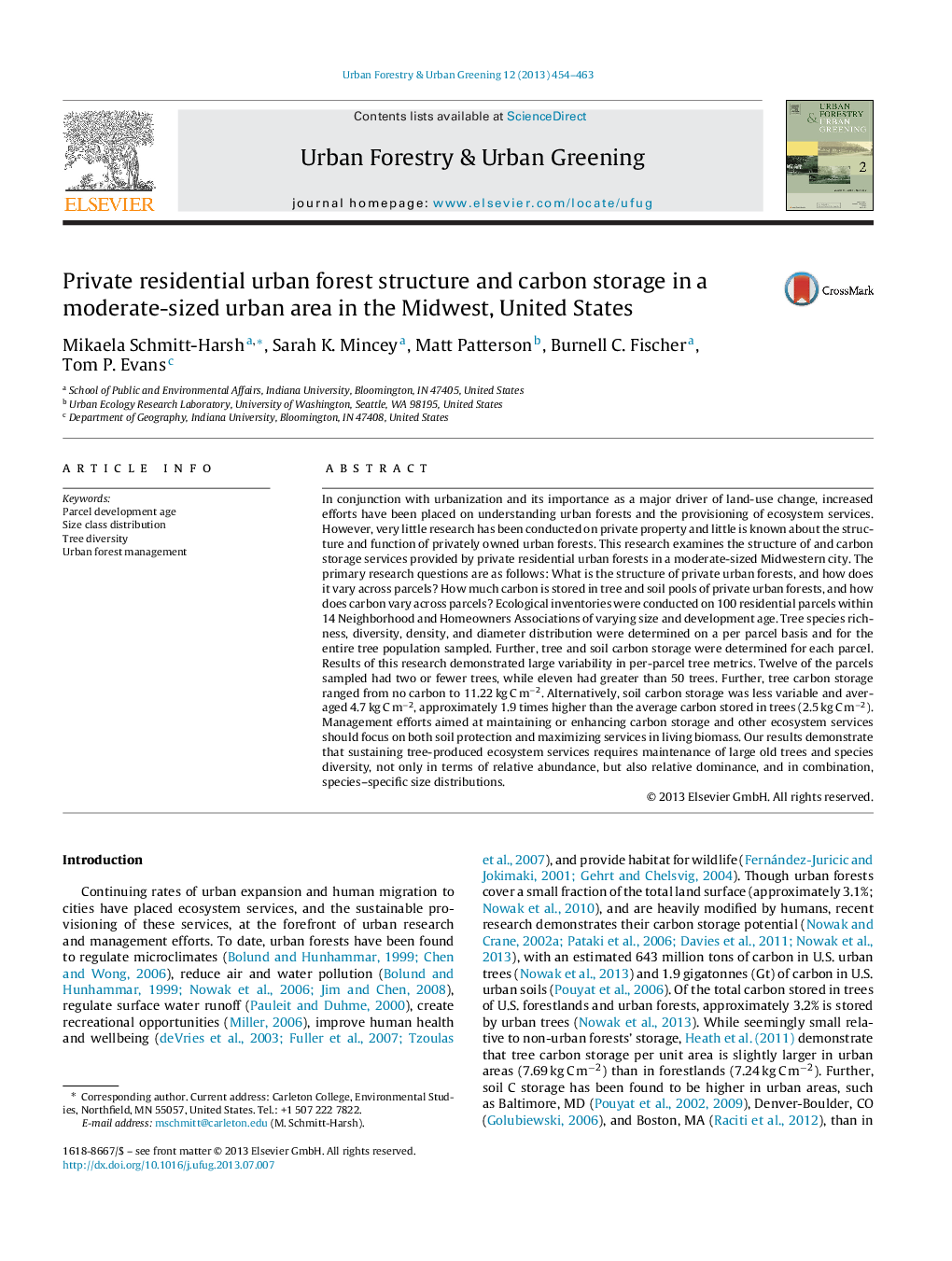| کد مقاله | کد نشریه | سال انتشار | مقاله انگلیسی | نسخه تمام متن |
|---|---|---|---|---|
| 94084 | 160254 | 2013 | 10 صفحه PDF | دانلود رایگان |

In conjunction with urbanization and its importance as a major driver of land-use change, increased efforts have been placed on understanding urban forests and the provisioning of ecosystem services. However, very little research has been conducted on private property and little is known about the structure and function of privately owned urban forests. This research examines the structure of and carbon storage services provided by private residential urban forests in a moderate-sized Midwestern city. The primary research questions are as follows: What is the structure of private urban forests, and how does it vary across parcels? How much carbon is stored in tree and soil pools of private urban forests, and how does carbon vary across parcels? Ecological inventories were conducted on 100 residential parcels within 14 Neighborhood and Homeowners Associations of varying size and development age. Tree species richness, diversity, density, and diameter distribution were determined on a per parcel basis and for the entire tree population sampled. Further, tree and soil carbon storage were determined for each parcel. Results of this research demonstrated large variability in per-parcel tree metrics. Twelve of the parcels sampled had two or fewer trees, while eleven had greater than 50 trees. Further, tree carbon storage ranged from no carbon to 11.22 kg C m−2. Alternatively, soil carbon storage was less variable and averaged 4.7 kg C m−2, approximately 1.9 times higher than the average carbon stored in trees (2.5 kg C m−2). Management efforts aimed at maintaining or enhancing carbon storage and other ecosystem services should focus on both soil protection and maximizing services in living biomass. Our results demonstrate that sustaining tree-produced ecosystem services requires maintenance of large old trees and species diversity, not only in terms of relative abundance, but also relative dominance, and in combination, species–specific size distributions.
Journal: Urban Forestry & Urban Greening - Volume 12, Issue 4, 2013, Pages 454–463